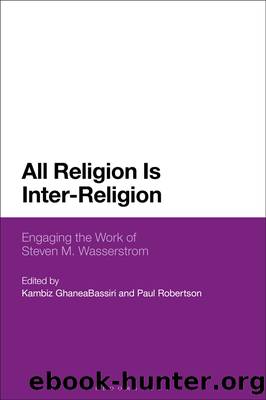All Religion Is Inter-Religion by Kambiz GhaneaBassiri;Paul Robertson;

Author:Kambiz GhaneaBassiri;Paul Robertson;
Language: eng
Format: epub
Publisher: Bloomsbury UK
17
Luksus and the Hasidic Critique of Postwar American Capitalism
Michael Casper
In her memoir of being raised by her grandparents in Williamsburg neighborhood of Brooklyn, New York in the late 1980s, Deborah Feldman wrote, âBubby has been begging to change the worn blue carpet in the dining room for years now, but Zeidy insists that luxus, luxury, is not something to be enjoyed in this lifetime.â1 For much of the second half of the twentieth century, many Hasidim in Williamsburg held to an ethos that demonized money, materialism and luxury goods. The target of this ideology was often distilled into the single Yiddish word luksus (frequently spelled luxus), which was presented as being incompatible with the Hasidic ideals of modesty, asceticism and unchanging ways. This paper seeks to historicize the term luksus and its meaning for Williamsburg Hasidim by looking at its usage in a number of sources including statements by the Satmar Rebbe, Joel Teitelbaum (1887-1979), writings in the Satmar organ, Der Yid, and the work of performer Yom Tom Ehrlich (1914-1990). I argue that the discourse on luksus was a way to mark Hasidic religious difference in the postwar era of widespread Jewish assimilation, suburbanization, and acculturation to middle-class American mores. At the same time, as some Hasidim became financially successful, the Hasidic attitude towards luksus served as a check, internally among Hasidim, against social change in the postwar period. Ultra-Orthodox communal attitudes toward economics, like those on the state, language, neighbor relations, and Israel, cut to the core of Jewish identity. Steve Wasserstromâs âNine Theses on the Study of Religionâ shed light on the emergence of Williamsburg Hasidism in this context. Citing âeconomic transactionâ among several prime examples of modes of interreligious contact, Wasserstrom writes, in his second thesis, âa critical study of religion applies itself to continuous cross-fertilizations of identity. Religion remakes itself in challenges to identity that provide identity.â2
A large segment of Williamsburg Hasidim arrived in New York in the late 1940s as refugees after surviving the Holocaust, especially in Hungary and Romania. Empty-handed, and in some cases orphaned, many of these Hasidim settled into Williamsburgâs âbrownstone barracksâ and entered blue-collar professions in which the language barrier was not a problem.3 Through extraordinary leadership and vision, the Satmar Rebbe led the transformation of this linguistically, culturally, and religiously heterogeneous group of religious new arrivals into a more unified Yiddish-speaking community with ultra-Orthodox ideals. The ideals espoused by the Satmar Rebbe were often defined against those of other Jews already living in Williamsburg, who were not considered to be âreal Jews.â As many Jews left Williamsburg for other neighborhoods in Brooklyn, or the suburbs, Hasidim in Williamsburg entrenched themselves in the inner city; as most Jews stopped speaking and reading Yiddish, Hasidim expanded their daily use of the language at home, in schools, and in media; as mainstream Jewry rallied around the cause of the State of Israel, the Satmar Rebbe doubled down on his anti-Zionism, publishing a treatise outlining his views in 1961; and as Jews entered
Download
This site does not store any files on its server. We only index and link to content provided by other sites. Please contact the content providers to delete copyright contents if any and email us, we'll remove relevant links or contents immediately.
The Lost Art of Listening by Michael P. Nichols(7165)
Why I Am Not A Calvinist by Dr. Peter S. Ruckman(4047)
The Rosicrucians by Christopher McIntosh(3373)
Wicca: a guide for the solitary practitioner by Scott Cunningham(3044)
Signature in the Cell: DNA and the Evidence for Intelligent Design by Stephen C. Meyer(2879)
Real Sex by Lauren F. Winner(2868)
The Holy Spirit by Billy Graham(2777)
To Light a Sacred Flame by Silver RavenWolf(2678)
The End of Faith by Sam Harris(2636)
The Gnostic Gospels by Pagels Elaine(2399)
Waking Up by Sam Harris(2331)
Nine Parts of Desire by Geraldine Brooks(2281)
Jesus by Paul Johnson(2229)
Devil, The by Almond Philip C(2206)
The God delusion by Richard Dawkins(2190)
Heavens on Earth by Michael Shermer(2189)
Kundalini by Gopi Krishna(2093)
Chosen by God by R. C. Sproul(2055)
The Nature of Consciousness by Rupert Spira(1982)
